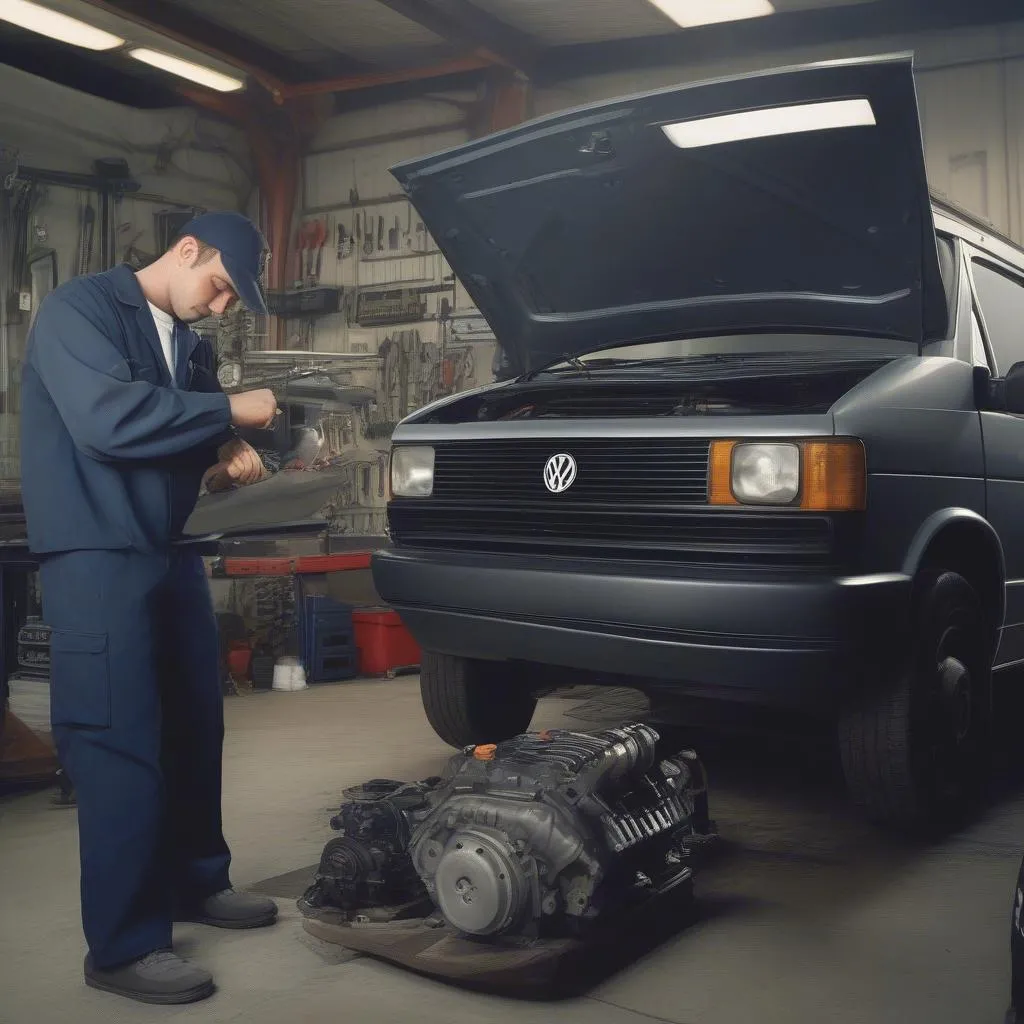Are you experiencing issues with your VW T4 clutch, such as a spongy pedal or difficulty shifting gears? Air in the clutch system could be the culprit. Don’t worry, “bleeding the T4 clutch” sounds more complicated than it actually is! With our step-by-step guide and some helpful tips, you can solve the problem yourself and save on expensive garage visits.
What Does “Bleeding the T4 Clutch” Actually Mean?
Think of the clutch system like a hydraulic braking system: for everything to work smoothly, the brake fluid must circulate freely and without air bubbles. If air enters the system, pressure can no longer build up properly – the result: the clutch may not disengage cleanly or engage properly. “Bleeding the T4 clutch” means nothing more than removing the troublesome air from the system and restoring the clutch’s full functionality.
 VW T4 clutch bleeding procedure in progress
VW T4 clutch bleeding procedure in progress
Step-by-Step Guide: How to Bleed Your T4 Clutch
Before you begin, make sure you have the correct brake fluid (DOT 4) on hand. You will also need a bleed hose, a suitable wrench, and a helper to assist you with the bleeding process.
- Preparation: Park the T4 on a level surface and apply the handbrake.
- Locate the Bleed Nipple: The bleed nipple is located on the clutch slave cylinder, usually on the gearbox.
- Attach the Hose: Place the bleed hose over the bleed nipple and run the other end into a clear container.
- Bleed the System: Have your helper pump the clutch pedal several times and hold it down. Now open the bleed nipple until brake fluid with air bubbles flows into the container. Close the nipple again as soon as the pedal reaches the floor.
- Repeat the Process: Repeat step 4 until no more air bubbles are visible in the brake fluid.
- Check Fluid Level: After bleeding, check the brake fluid level in the reservoir and top it up if necessary.
What to Consider When Bleeding the T4 Clutch:
- Cleanliness: Ensure that no dirt enters the clutch system, as this can cause damage.
- Fluid Level: Regularly check the brake fluid level in the reservoir and top it up if necessary.
- Patience: Bleeding the clutch can take some time. Don’t be discouraged if it doesn’t work immediately.
 A mechanic working on the engine of a VW T4 van
A mechanic working on the engine of a VW T4 van
Benefits of a Properly Bleed Clutch
- Improved Shifting Feel: Clean disengagement and engagement ensures smooth and precise gear changes.
- Longer Clutch Life: Air in the system can lead to overloading of clutch components and accelerate their wear.
- Safer Driving: A properly functioning clutch is essential for safe driving behavior.
Frequently Asked Questions About “Bleeding the T4 Clutch”:
- How often does the clutch need to be bled? Normally, bleeding the clutch is only necessary during maintenance work or repairs to the system.
- Can I bleed the clutch myself? Yes, with some DIY skills and our instructions, bleeding the clutch is also feasible for amateur mechanics.
- How much does it cost to bleed the clutch in a workshop? The costs for bleeding the clutch in a workshop vary depending on the region and hourly rate. On average, you can expect costs between 50 and 100 euros.
Do You Still Have Questions or Need Help Bleeding Your T4 Clutch?
Then don’t hesitate to contact us! Our team of experts is here to help you with advice and assistance. At autorepairaid.com you will also find more helpful tips and tricks for repairing and maintaining your VW T4.
Contact us now! Our car experts are available around the clock!

